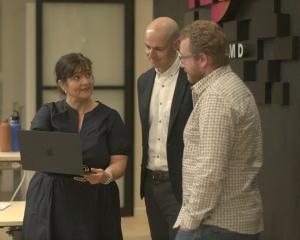Jade managing director David Lindsay said global success for Jade had come from its experience with Port Otago 21 years ago.
Port Otago chief executive Geoff Plunket, and other managers, had shown ''incredible faith'' in working with Jade to design a program after they could not find a solution to the handing of cargo around the port.
''We all took a real risk. Port Otago was not sure what it wanted and we had to develop an application that didn't exist. We didn't know what it would cost and they didn't know what they really wanted.''
Jade would design something and take it to Port Otago where it either met the requirements or was taken back for further work. In a combination of good luck and good management, the app was eventually installed and proved to be successful, Mr Lindsay said.
The result was the Jade Master Terminal product which was being used in marine terminals around the world.
Port Otago was a mixed-cargo port and that gave Jade its edge on competitors around the world who were focusing their attentions solely on moving containers, he said.
The product had been rebuilt a couple of times over the past eight or nine years and Jade had invested millions of dollars in recoding but it was one of those solutions which was showing increasing demand.
Mixed-cargo ports were faced with increasing complexity and the need to react more quickly to remain competitive, Mr Lindsay said.
''This is driving their decision to adopt Master Terminal as their terminal operating systems.''
The next stage would be showing the visibility of the supply chain - tracking cargo but in an agnostic way - either on a ship, at a rail hub, marine port, trucking organisation or warehouse.
In the end, not much of the old code would remain, but the general concept remained the same, he said.
''We have to look a long way ahead but deal in the present. Technology is moving so fast that we can't make some decisions but we need to understand the direction being travelled.''
Jade announced an outstanding September quarter, securing 19 new terminals across the Middle East, Europe and Africa, he said. In context, Jade previously aimed for 19 new terminals over a couple of years.
''Nineteen in one quarter is phenomenal growth for us, especially when we have a target of 15 to 20 a year.''
Demand had been building during the past two years as legacy systems struggled to deal with demand for integration and visibility across the supply chain, Mr Lindsay said.
The fastest-growing segment of the port market was mixed-cargo ports and terminals.
''We believe this acceleration is a trend that will continue and we are committed to invest in building capability, particularly offshore. Jade is becoming increasingly well positioned to assume the number one position in the market.''
While the past quarter success had been in Middle East, Europe and Africa, Jade was focused on driving growth in the United States market and expected to secure significant new business from the region in the next six months, he said.
The growth meant Jade would double the size of its international offices to ensure it continued to provide the best possible experience for customers.
Extra staff had been taken on in New Zealand and overseas, Mr Lindsay said. In New Zealand, Jade wanted the best IT staff possible. While it had taken some on, it could now wait to ensure it attracted the best.












